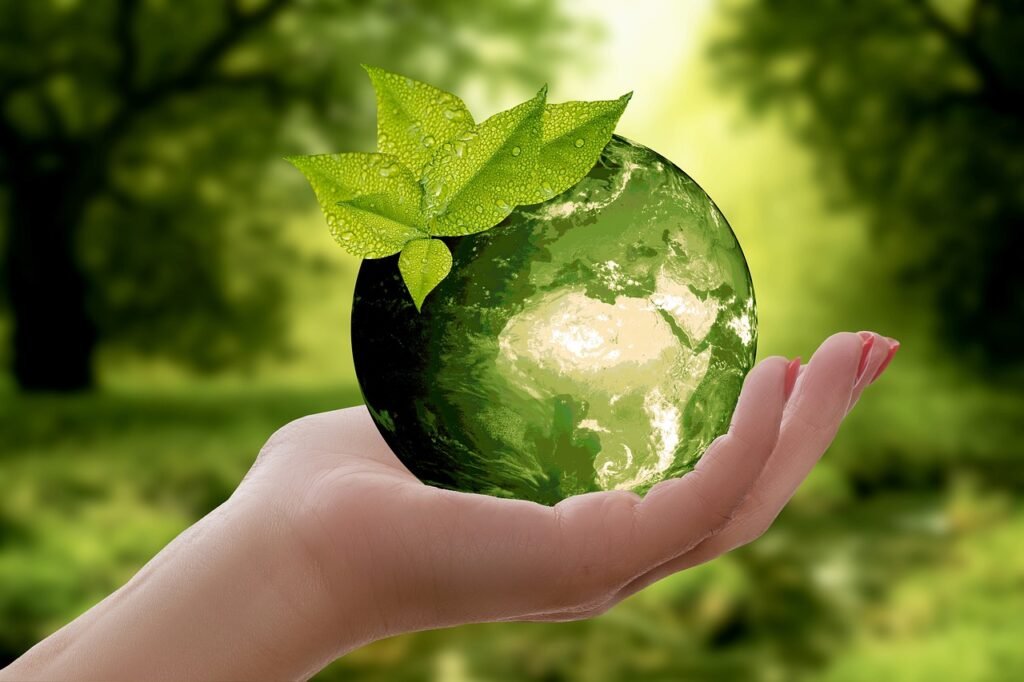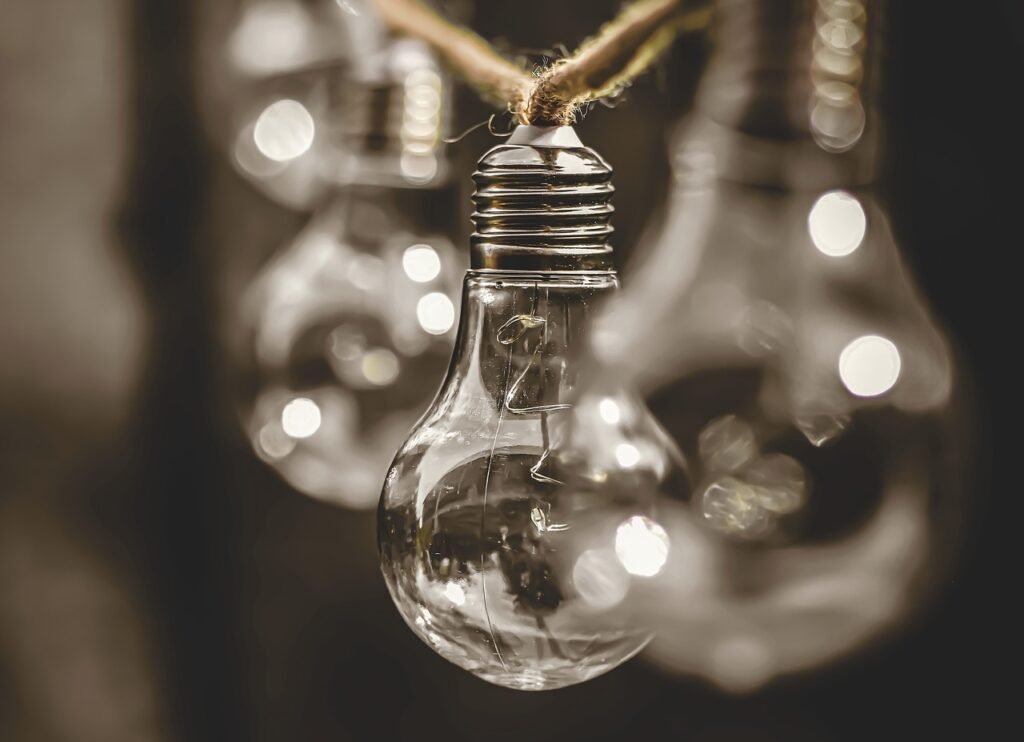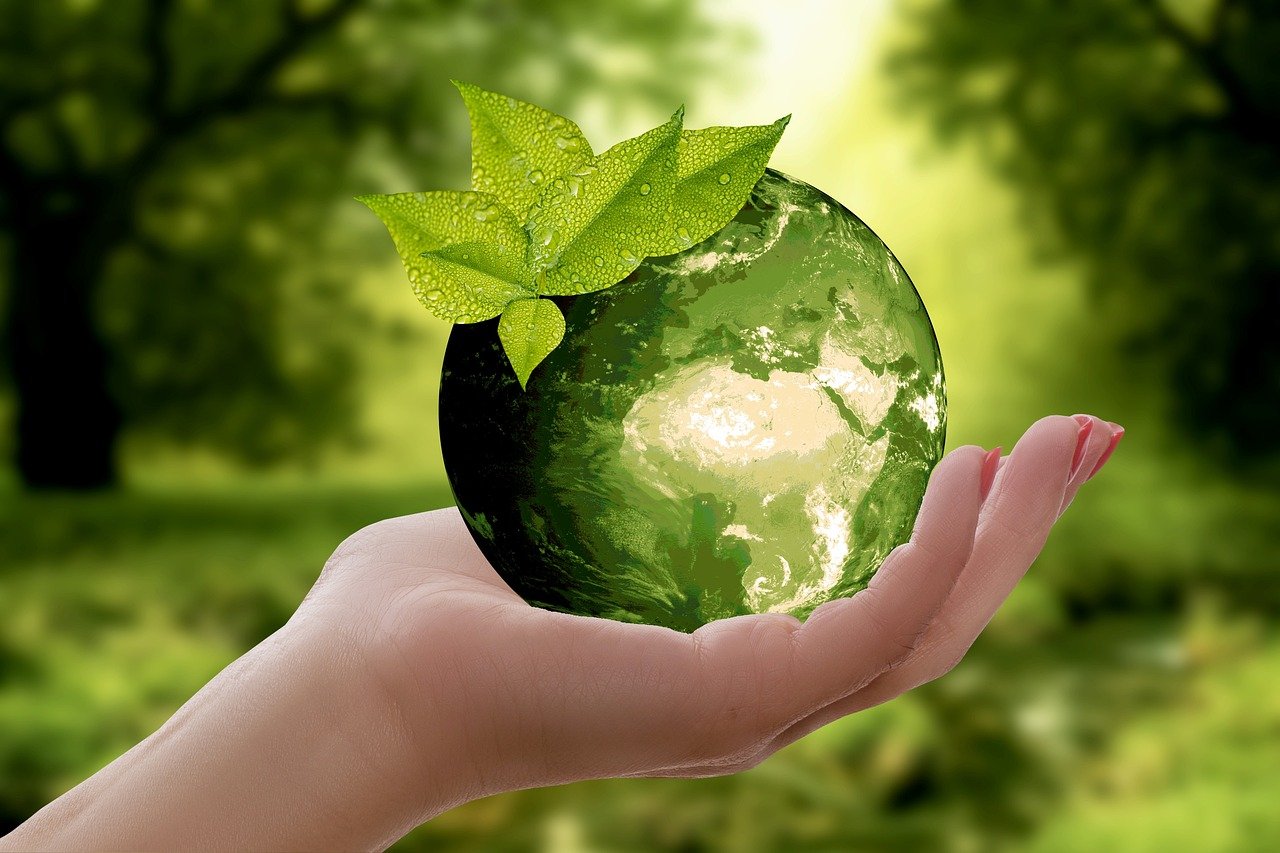Are you tired of cleaning your home with harsh chemicals that are not only harmful to you and your family, but also to the environment? Look no further! In this article, we will introduce you to a wide range of eco-friendly and sustainable cleaning solutions that will not only help you maintain a clean and healthy living space, but also contribute to the protection of our precious planet. From all-natural homemade cleaners to eco-friendly cleaning products, we’ve got you covered. Say goodbye to toxic chemicals and hello to a sustainable and cleaner future!
Switch to Non-Toxic Cleaners
Benefits of Non-Toxic Cleaners
Switching to non-toxic cleaners is a simple yet impactful step towards a more sustainable and environmentally friendly cleaning routine. Traditional cleaning products often contain harsh chemicals that not only harm the planet but also pose health risks to you and your family. Non-toxic cleaners, on the other hand, are made with natural ingredients that are safe for both humans and the environment. By using non-toxic cleaners, you can reduce air and water pollution, protect aquatic life, and create a healthier living environment.
Popular Non-Toxic Cleaners
There are several popular non-toxic cleaning brands available on the market today. These brands offer a wide range of products that are effective and safe to use. Some of the popular non-toxic cleaning brands include Seventh Generation, Method, Mrs. Meyer’s Clean Day, and Ecover. These brands prioritize using natural and plant-based ingredients in their formulations, providing a safer alternative to traditional cleaning products.
Homemade Non-Toxic Cleaners
If you prefer a more DIY approach, you can easily create your own non-toxic cleaners using simple household ingredients. Vinegar, baking soda, lemon juice, and essential oils are excellent natural cleaning agents that can be combined to create effective and non-toxic cleaning solutions. For example, a mixture of white vinegar and water can be used as an all-purpose cleaner, while baking soda can be used as a scrubbing agent for tough stains. Making your own non-toxic cleaners not only saves money but also allows you to have full control over the ingredients used in your cleaning products.
Use Natural Cleaning Ingredients
Benefits of Natural Cleaning Ingredients
Natural cleaning ingredients offer numerous benefits for both the environment and your health. Unlike chemical-based cleaning agents, natural ingredients are biodegradable and do not contribute to water pollution or soil contamination. Additionally, natural cleaning ingredients are often gentler on surfaces, reducing the risk of damage or discoloration. Using natural cleaning ingredients also eliminates the need for harmful chemical exposure, promoting a healthier indoor environment for you and your family.
Common Natural Cleaning Ingredients
There are several common natural cleaning ingredients that can be found in your pantry or refrigerator. Vinegar is a versatile natural cleaner that can effectively remove stains, deodorize, and kill bacteria. Baking soda is another powerful natural cleaner that can tackle tough stains and eliminate unpleasant odors. Lemon juice is a natural bleaching agent and can be used to remove stains and freshen up surfaces. Essential oils, such as tea tree oil or lavender oil, not only add a pleasant scent to your cleaning products but also have antimicrobial properties.
DIY Natural Cleaning Recipes
Creating your own natural cleaning products is not only cost-effective but also allows you to customize the scents and strengths of your cleaners. Here are a few DIY natural cleaning recipes to get you started:
-
All-Purpose Cleaner: Mix equal parts water and vinegar in a spray bottle. Add a few drops of your favorite essential oil for a pleasant scent.
-
Oven Cleaner: Sprinkle baking soda onto the bottom of the oven. Spray vinegar over the baking soda until it foams. Let it sit overnight, then scrub and wipe away the grime.
-
Glass Cleaner: Mix one part water, one part vinegar, and a few drops of lemon juice in a spray bottle. Spray onto glass surfaces and wipe with a clean cloth for streak-free shine.
-
Furniture Polish: Mix equal parts olive oil and lemon juice in a spray bottle. Shake well before each use and spray onto a soft cloth. Gently polish wooden furniture for a natural shine.

This image is property of pixabay.com.
Try Microfiber Cleaning Tools
Advantages of Microfiber Cleaning Tools
Microfiber cleaning tools are an excellent choice for sustainable cleaning due to their many advantages. Microfiber cloths and mops are made from synthetic fibers that are highly absorbent and have a unique structure that effectively traps dirt, dust, and bacteria without the need for chemicals or excessive scrubbing. These tools are also durable and long-lasting, reducing the need for frequent replacements. Additionally, microfiber cleaning tools can be used with minimal water, making them an eco-friendly option that helps conserve water resources.
Types of Microfiber Cleaning Tools
Microfiber cleaning tools come in various forms to suit different cleaning needs. Microfiber cloths are versatile and can be used for dusting, wiping surfaces, and drying. They are available in different sizes and densities, allowing you to choose the right cloth for each task. Microfiber mops are designed for wet cleaning and are particularly effective for hard floors. They feature removable and washable mop heads, making them a hygienic and sustainable alternative to disposable mop pads. For more specific cleaning tasks, you can also find microfiber dusters, scrubbers, and window cleaning tools.
Proper Care and Maintenance
To ensure the longevity and effectiveness of your microfiber cleaning tools, proper care and maintenance are essential. Firstly, it is recommended to wash microfiber cloths and mop heads separately from other laundry items to prevent lint and fiber transfer. Avoid using fabric softeners or bleach, as they can coat the fibers and reduce their absorbency. Instead, use a mild laundry detergent and wash them in warm water. It is best to air dry microfiber cleaning tools, as heat from dryers can damage the fibers and reduce their effectiveness. With regular washing and proper care, your microfiber cleaning tools can last for a long time, providing you with sustainable cleaning solutions.
Opt for Reusable Cleaning Supplies
Benefits of Reusable Cleaning Supplies
Using reusable cleaning supplies offers several benefits for the environment and your wallet. Disposable cleaning products, such as paper towels and disposable mop pads, contribute to massive amounts of waste that end up in landfills. By opting for reusable cleaning supplies, you can significantly reduce your household waste and lower your carbon footprint. Additionally, reusable cleaning supplies are often more durable and effective than their disposable counterparts, providing better cleaning results and saving you money in the long run.
Examples of Reusable Cleaning Supplies
There are various reusable cleaning supplies available that can replace their disposable counterparts. Instead of using paper towels, opt for reusable cleaning cloths made from microfiber or cotton. These cloths can be machine washed and reused multiple times, reducing waste. Instead of using disposable mop pads, invest in a reusable mop with machine washable mop heads. Reusable spray bottles and refillable cleaning solution containers are also great alternatives to single-use plastic bottles. By integrating these reusable cleaning supplies into your routine, you can make a positive impact on the environment and reduce your household waste.
Tips for Properly Using and Caring for Reusables
To maximize the lifespan of your reusable cleaning supplies, proper usage and care are crucial. Wash your reusable cleaning cloths and mop heads after each use to prevent the build-up of dirt, bacteria, and unpleasant odors. As mentioned earlier, it is best to wash them separately from other laundry items to prevent lint transfer. When using reusable spray bottles or containers, ensure that they are thoroughly cleaned and dried before refilling them with new cleaning solutions. Regularly inspect your reusable cleaning supplies for any signs of wear or damage and replace them as necessary. By taking care of your reusables, you can enjoy their benefits for a long time and reduce your impact on the environment.

This image is property of pixabay.com.
Minimize Water Consumption
Water-Saving Cleaning Techniques
Minimizing water consumption during cleaning is an important aspect of sustainable cleaning practices. There are several techniques you can implement to reduce water usage without compromising on cleanliness. Firstly, avoid letting the water run continuously while cleaning. Instead, turn off the tap when not in use, such as when scrubbing surfaces or lathering soap. Use a bucket or basin filled with water for tasks such as mopping or rinsing cleaning tools, rather than running water directly. Additionally, prioritize spot cleaning and targeted cleaning instead of cleaning entire surfaces if not necessary. These water-saving techniques can significantly reduce your household water consumption and contribute to water conservation efforts.
Use of Steam Cleaners
Steam cleaners are an excellent water-saving alternative to traditional cleaning methods. These machines use the power of high-temperature steam to effectively clean and sanitize various surfaces without the need for chemicals or excessive water usage. Steam cleaners can tackle tough stains, grease, and bacteria, making them suitable for a wide range of cleaning tasks, from floors and countertops to upholstery and curtains. By harnessing the power of steam, you can achieve a deep clean while conserving water and minimizing the use of cleaning agents harmful to the environment.
Rainwater Harvesting
Utilizing rainwater harvesting systems can further minimize water consumption for cleaning purposes. Rainwater harvesting involves collecting rainwater from rooftops or other surfaces and storing it for later use. The collected rainwater can be used for various cleaning tasks, such as mopping floors, watering plants, or washing outdoor surfaces. By using rainwater instead of tap water, you can make use of a free and abundant resource while reducing your reliance on treated water. However, it is important to ensure that your rainwater harvesting system is properly designed and maintained to ensure the water’s quality.
Use Energy-Efficient Appliances
Benefits of Energy-Efficient Cleaning Appliances
Using energy-efficient cleaning appliances not only helps protect the environment but also saves you money on utility bills. Energy-efficient appliances are designed to use less energy while maintaining or even enhancing their cleaning performance. By choosing energy-efficient vacuum cleaners, washing machines, and other cleaning appliances, you can significantly reduce your household energy consumption and lower your carbon footprint. Moreover, energy-efficient appliances often come with additional features such as adjustable settings and sensors that optimize their performance, resulting in better cleaning results and improved efficiency.
Energy-Efficient Vacuum Cleaners
Vacuum cleaners are a staple in every cleaning routine, and opting for energy-efficient models can make a significant difference in reducing your energy usage. Look for vacuum cleaners labeled with energy star ratings, as these appliances meet strict energy efficiency guidelines set by the Environmental Protection Agency (EPA). Energy-efficient vacuum cleaners often use advanced motor and filtration technologies that require less power to operate while maintaining powerful suction. Additionally, consider choosing vacuum cleaners with adjustable power settings to match the cleaning requirements of different surfaces, further optimizing energy usage.
Efficient Washing Machines
Washing machines are another cleaning appliance that can benefit from energy-efficiency features. Front-loading washing machines are generally more energy-efficient than top-loading ones, as they use less water and require less energy for heating. Look for washing machines with high energy star ratings and features such as load sensors and adjustable water levels. These features ensure that the machine uses only the necessary amount of water and energy for each wash, reducing waste. Additionally, using cold water for laundry whenever possible can further enhance energy efficiency and help preserve the quality of your clothes.

This image is property of pixabay.com.
Implement Green Packaging
Eco-Friendly Packaging Materials
Green packaging plays a crucial role in sustainable cleaning practices. Many cleaning products come in single-use plastic containers or excessive packaging that contribute to landfill waste and pollution. Opting for eco-friendly packaging materials can help minimize your environmental impact. Look for cleaning products that use packaging made from recycled materials, such as recycled plastic or cardboard. Additionally, consider products that use minimal or no packaging at all, such as concentrated cleaning solutions that can be mixed with water at home. By choosing products with sustainable packaging, you can actively support efforts to reduce plastic waste and promote a circular economy.
Sustainable Packaging Practices
In addition to choosing products with sustainable packaging, implementing sustainable packaging practices in your own cleaning routine can further reduce waste. Consider purchasing cleaning supplies in bulk or larger sizes to reduce the need for frequent packaging disposal. If possible, choose refillable cleaning solution containers that allow you to purchase concentrated solutions and mix them as needed. When disposing of packaging materials, make sure to recycle them properly according to your local recycling guidelines. By adopting sustainable packaging practices, you contribute to reducing the demand for new packaging materials and promote a more circular and sustainable economy.
Recycling and Waste Reduction
Proper recycling and waste reduction practices are essential components of sustainable cleaning. When it comes to cleaning products, always check the packaging to determine the recyclability of the materials. Most plastic, glass, and cardboard can be recycled, but it is important to follow your local recycling guidelines to ensure proper disposal. Consider composting organic waste, such as fruit and vegetable scraps, coffee grounds, and tea bags, to divert them from landfills and create nutrient-rich soil for your garden. By being mindful of your waste and actively participating in recycling and composting initiatives, you can contribute to a cleaner and healthier environment.
Support Sustainable Cleaning Brands
Criteria for Choosing Sustainable Cleaning Brands
Supporting sustainable cleaning brands is a powerful way to protect the planet and promote environmentally friendly practices. When choosing sustainable cleaning brands, there are several key criteria to consider. Look for brands that prioritize the use of natural and non-toxic ingredients in their formulations. Check if the brand is committed to minimizing their environmental impact through sustainable sourcing, manufacturing, and packaging practices. Additionally, consider brands that transparently disclose their ingredients and have certifications from recognized organizations indicating their commitment to sustainability. By choosing sustainable cleaning brands, you can align your purchasing power with your values and make a positive impact on the environment.
Examples of Sustainable Cleaning Brands
There are numerous sustainable cleaning brands available that offer effective and eco-friendly cleaning solutions. Some examples of sustainable cleaning brands include:
-
Seventh Generation: Seventh Generation is committed to creating plant-based and non-toxic cleaning products that are safe for the environment and people. They have a wide range of cleaning products, including laundry detergents, all-purpose cleaners, and dish soaps.
-
Method: Method is known for its stylish packaging and effective, planet-friendly cleaning products. Their formulations are biodegradable and made from natural ingredients such as plant-based surfactants and essential oils.
-
Mrs. Meyer’s Clean Day: Mrs. Meyer’s Clean Day offers a variety of cleaning products infused with essential oils for a fresh and pleasant scent. Their products are free from harsh chemicals and are biodegradable.
-
Ecover: Ecover is a pioneer in the field of eco-friendly cleaning products. They use plant-based ingredients and aim to minimize their environmental impact throughout their entire supply chain.
By supporting these and other sustainable cleaning brands, you can contribute to the growth of the green cleaning industry and encourage more companies to adopt eco-friendly practices.
Certifications to Look for
When selecting sustainable cleaning brands, certifications can serve as a helpful guide in identifying truly environmentally friendly products. Look for certifications such as USDA Certified Biobased, which indicates that a product is made with a significant amount of renewable biological ingredients. The EcoLogo certification symbolizes that a product meets specific environmental performance standards, including reduced environmental impact during manufacturing and use. Other certifications to look for include the Cradle to Cradle certification, which focuses on the use of safe and sustainable materials and processes, and the Leaping Bunny certification, which ensures that a product is cruelty-free and not tested on animals. These certifications provide assurance that the cleaning products you choose have undergone rigorous testing and meet stringent sustainability criteria.
Reduce Single-Use Plastics
Impact of Single-Use Plastics on the Environment
Single-use plastics have a devastating impact on the environment. These disposable plastics, such as plastic bags, packaging, and utensils, contribute to pollution, harm wildlife, and take hundreds of years to decompose. By reducing our reliance on single-use plastics, we can help mitigate these environmental issues. The cleaning industry is no exception, as many cleaning products are packaged in plastic bottles or contain plastic components. By opting for plastic-free and reusable alternatives, you can significantly reduce your plastic footprint and contribute to a cleaner and healthier planet.
Alternatives to Single-Use Plastics
Fortunately, there are plenty of alternatives to single-use plastics that can be easily incorporated into your cleaning routine. Instead of using disposable plastic bottles, consider purchasing concentrated cleaning solutions that can be diluted in reusable spray bottles. Utilize refillable containers for hand soaps, dish soaps, and laundry detergents to eliminate the need for single-use plastic packaging. Additionally, replace single-use plastic scrub brushes and sponges with durable alternatives made from natural materials such as wood, bamboo, or plant-based bristles. By adopting these alternatives, you not only reduce your plastic waste but also promote the use of sustainable materials in your daily life.
Tips for Plastic-Free Cleaning
Transitioning to a plastic-free cleaning routine may require some adjustments, but the benefits are well worth it. Here are some tips for plastic-free cleaning:
-
Use bar soap instead of liquid hand soaps that come in plastic bottles.
-
Purchase cleaning products in bulk or concentrate form and dilute them in reusable containers.
-
Replace disposable plastic scrub brushes and sponges with natural alternatives made from wood or plant-based materials.
-
Consider using compostable or reusable cleaning wipes instead of disposable ones.
-
Opt for plastic-free packaging whenever possible and support brands that prioritize sustainable packaging practices.
By incorporating these tips into your cleaning routine, you can significantly reduce your plastic waste and contribute to a cleaner and greener future.
Proper Waste Disposal
Segregating and Recycling Household Waste
Proper waste disposal is an essential aspect of sustainable cleaning. Segregating and recycling household waste helps divert reusable materials from landfills and reduces the strain on natural resources. Establish a system for segregating waste into different categories such as paper, plastic, glass, metal, and organic waste. Check the recycling guidelines in your area to ensure proper sorting and disposal. Rinse out containers and remove any contaminants before recycling them. By implementing a proper waste disposal system, you can contribute to the circular economy and reduce the environmental impact of your cleaning routine.
Hazardous Waste Disposal
Certain cleaning products, such as paint thinners, solvents, and pesticides, are considered hazardous waste and require special disposal methods. These substances can be harmful to human health and the environment if not disposed of properly. Check with your local waste management facility for guidelines on how to dispose of hazardous waste safely. Many municipalities offer hazardous waste drop-off locations or scheduled collection days to ensure responsible disposal. By handling hazardous waste correctly, you can prevent contamination of water sources and protect the environment from harmful substances.
Composting for Organic Waste
Composting is an excellent way to dispose of organic waste from your cleaning routine and turn it into nutrient-rich soil for your garden or plants. Instead of throwing away fruit and vegetable peels, coffee grounds, and other organic waste, set up a composting bin or pile in your backyard. Composting breaks down organic materials through natural processes, resulting in a valuable soil amendment called compost. This nutrient-rich compost can be used to enrich your garden soil or potted plants, reducing the need for synthetic fertilizers. By composting your organic waste, you complete the cycle of sustainability and create a closed-loop system in your cleaning routine.
In conclusion, sustainable cleaning solutions are crucial for protecting the planet and creating a healthier living environment. Switching to non-toxic cleaners and using natural cleaning ingredients reduce air and water pollution while ensuring the safety of your family. Incorporating microfiber cleaning tools, reusable cleaning supplies, and energy-efficient appliances amplify the sustainability of your cleaning routine. Implementing green packaging practices, supporting sustainable cleaning brands, and reducing single-use plastics further contribute to a cleaner and greener future. Proper waste disposal, including recycling, hazardous waste management, and composting, completes the cycle of sustainability. By following these sustainable cleaning practices, you can make a positive impact on the environment and protect the planet for future generations.
